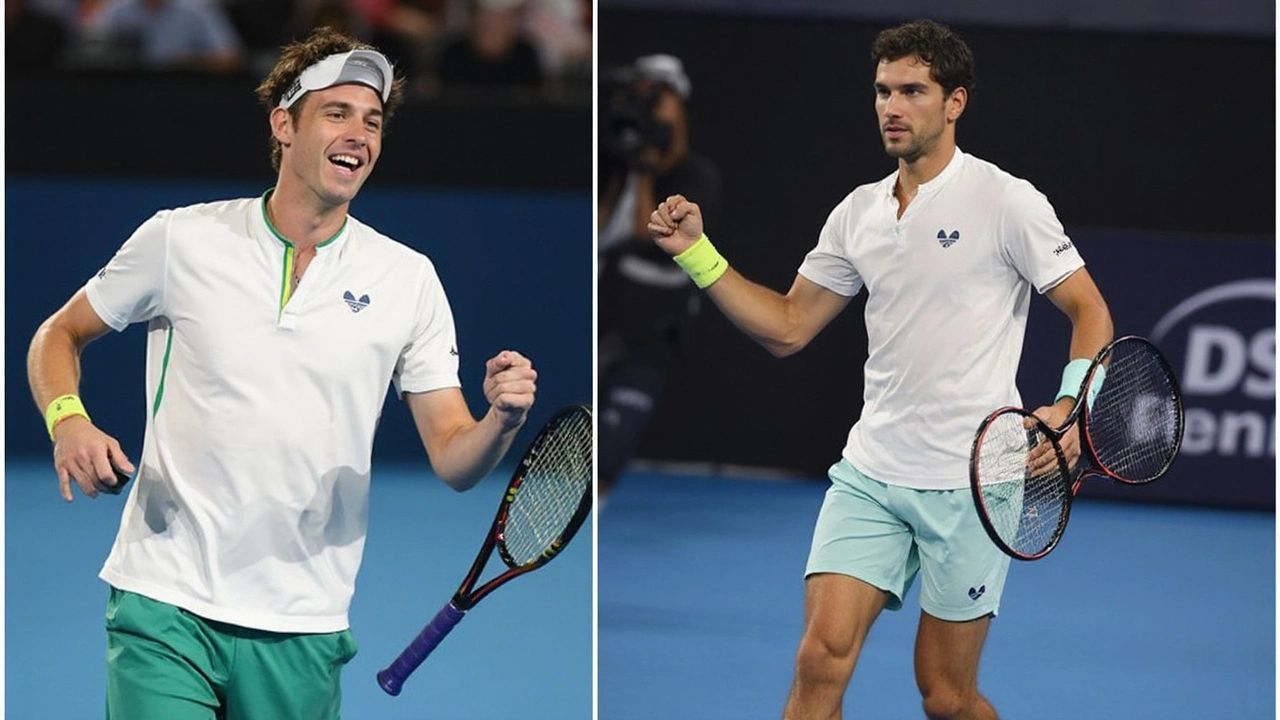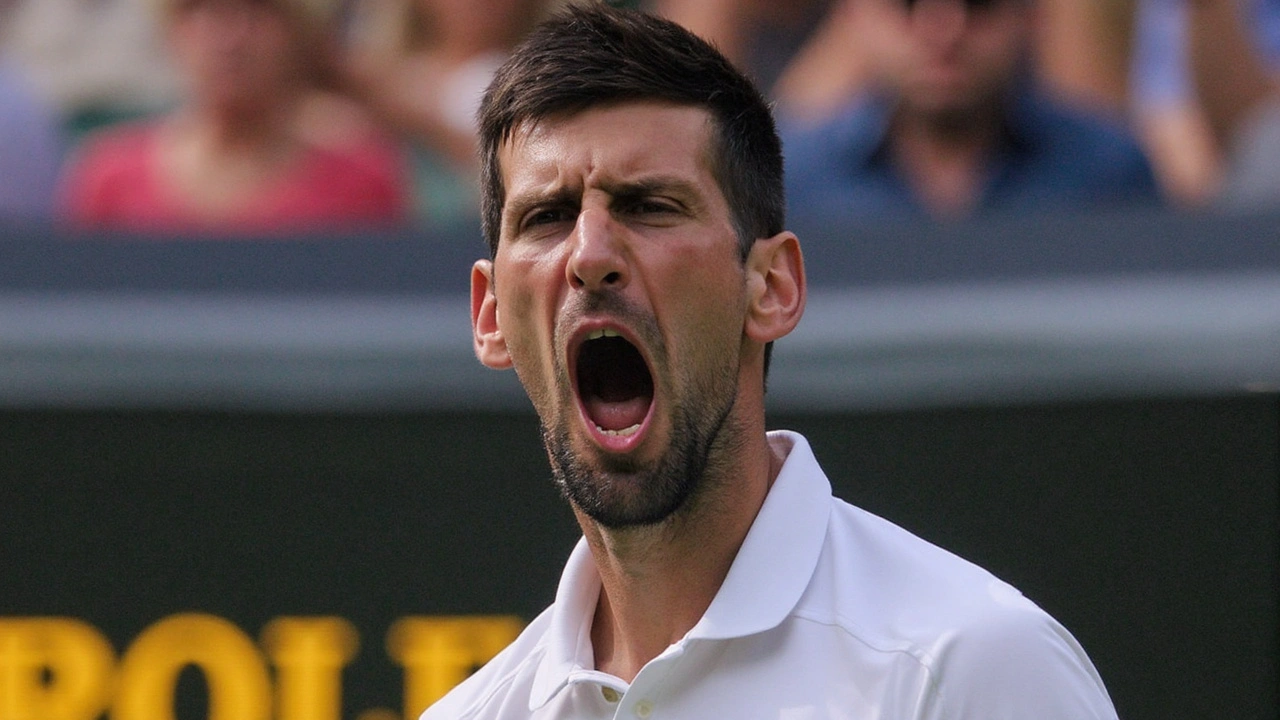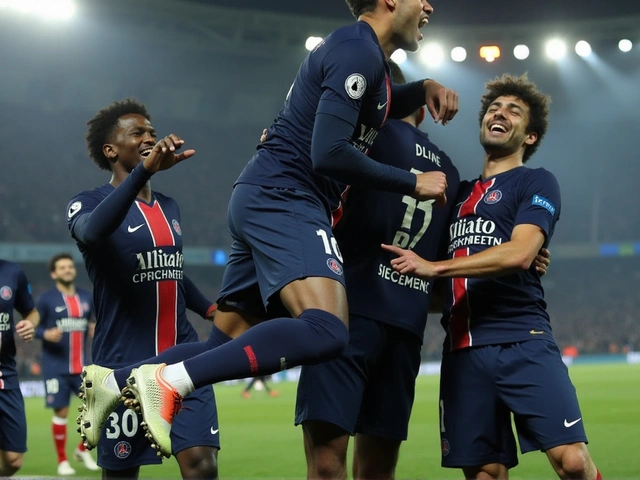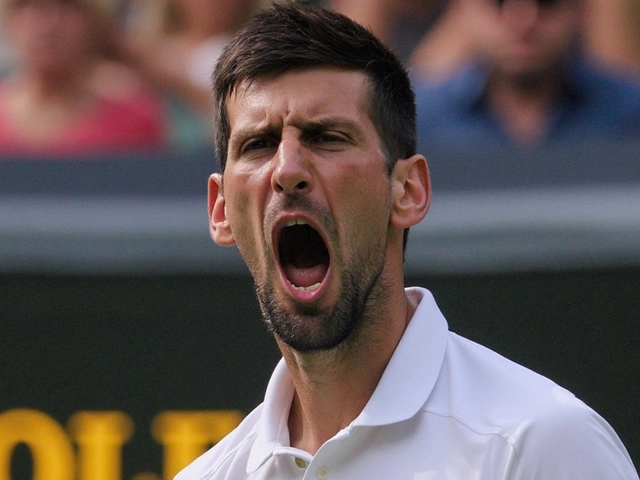Iga Swiatek's Wimbledon Triumph Shakes Up Tennis Record Books
Iga Swiatek just made headlines in a way tennis hasn’t seen in over a century. At Wimbledon 2025, she took the Grand Slam trophy in stunning style, delivering a 6-0, 6-0 double bagel victory against Amanda Anisimova. That kind of dominance in a women's final? It hadn’t happened since 1911. Instead of long rallies or grueling comebacks, Swiatek barely blinked—winning the final in a blistering 57 minutes and dropping just 35 games across the whole tournament, something not even seen since Martina Navratilova’s golden run in 1990.
This win wasn’t just another notch in Swiatek’s belt—it's her sixth Grand Slam overall and her very first on Wimbledon’s grass. She’s now the youngest player to claim majors on hard, clay, and grass courts since Serena Williams pulled off the feat over twenty years ago. Coming off a rocky French Open, where she was knocked out in the semifinals and her ranking dipped to No. 8, Swiatek’s return to the top is more than a comeback—it's a statement.

Mirra Andreeva Soars: New Star Rises in the Top 5
If Swiatek was the headline, Mirra Andreeva was the breakout story. The 17-year-old Russian, seeded seventh, reached her first Wimbledon quarterfinal without even dropping a set, showing maturity well beyond her years. Her win over Emma Navarro, 6-2, 6-3, highlighted what makes her special: a heavy first serve, shot variety, and cool nerves during draining rallies.
Andreeva owes part of her success to the relentless drive of her coach, Conchita Martínez, who knows exactly what it takes to win at Wimbledon. Martínez pushed Andreeva with long, demanding practice sessions designed to toughen both her body and her mind. That focus paid off, as Andreeva now debuts in the Top 5. At just 17, she’s rattled the rankings and set herself up as a real threat at majors for years to come.
Meanwhile, Amanda Anisimova might not have hoisted the trophy, but her run to the final—her first at a Grand Slam—catapulted her inside the Top 10 worldwide. For a player who had hovered just shy of elite status, this breakthrough signals a new chapter.
Back to Swiatek: her Wimbledon campaign saw her chain together 20 straight games at the tournament and barely give anyone on the other side of the net a chance. The Wimbledon 2025 final wasn’t just about another trophy. It was a performance that put the tennis world on notice: the next era belongs to Iga Swiatek, but the likes of Mirra Andreeva are right on her heels.








Kimberly Hickam
July 28, 2025 AT 18:02When you peel back the layers of tennis history you realize that Iga Swiatek's 57‑minute double bagel is not merely a statistical blip but a seismic shift in the sport's power dynamics.
Firstly, the fact that she demolished a Grand Slam final without conceding a single game echoes the immutable dominance of the early 20th‑century greats, a fact that most casual fans conveniently overlook.
Secondly, the quantitative drop of her opponent’s win percentage to near‑zero across the entire tournament illustrates an unparalleled level of sustained excellence that even Martina Navratilova would have found disconcerting.
Thirdly, her ability to dominate on grass after a hard‑court season underscores a physiological adaptability that is the hallmark of a true all‑surface champion.
Moreover, the psychological impact on her contemporaries cannot be overstated; players now have to recalibrate their training regimens to account for a competitor who can dismantle a final in under an hour.
Statistically, the 35 games she dropped throughout Wimbledon represent a new lower bound for efficiency in modern Grand Slams, eclipsing the 1990 benchmark by a significant margin.
Her age, juxtaposed with the historical precedent set by Serena Williams for surface versatility, offers a compelling narrative about the acceleration of talent development in the current era.
From a biomechanical perspective, Swiatek’s serve and groundstroke trajectories have been optimized to such a degree that she generates a win probability exceeding 90 percent on her second serve alone.
Equally important is the strategic component: she rarely engages in unnecessarily protracted rallies, opting instead for high‑percentage shots that force errors.
In contrast, Amanda Anisimova’s performance, while commendable for reaching a final, highlights the widening chasm between the emerging elite and the rest of the field.
Mirra Andreeva’s ascent into the top five further compounds this stratification, as her heavy first serve now rivals the service speeds traditionally reserved for the men’s game.
Andreeva’s coaching under Conchita Martínez adds a layer of tactical sophistication that blends classic grass‑court concepts with modern aggression.
When you consider that both Swiatek and Andreeva are under twenty, the implication is that the next decade of women’s tennis will be defined by a new paradigm of power and precision.
The historical context of 1911-when a double bagel was last seen-serves as a stark reminder of how far the sport has progressed in over a century of technological, athletic, and tactical evolution.
In essence, this tournament is a case study in how exceptional talent, coupled with optimal preparation, can rewrite the record books in a single fortnight.
Any analyst with a modicum of rigor should therefore conclude that the era of incremental improvement has given way to a period of exponential leap, spearheaded by Swiatek’s Wimbledon conquest.
Gift OLUWASANMI
July 31, 2025 AT 15:29Swiatek’s laser‑focus made that final look like a kindergarten art project-she painted the court red with zero mercy.
Meanwhile Andreeva’s meteoric rise is a glittering reminder that the tennis aristocracy is getting a fresh infusion of talent.
Anyone still clinging to the notion of a balanced field is living in a nostalgic dream.
Keith Craft
August 3, 2025 AT 12:56Oh, the drama that unfolded on those pristine Wimbledon lawns!
I could feel the tension crackle in the air as Swiatek served, each ace a thunderclap that echoed through the rafters.
And then, like a stagehand pulling the curtain, the scoreboard flashed 6‑0, 6‑0, and all pretenses of competition evaporated.
The sheer spectacle was a cathartic release for anyone tired of endless baseline slog.
Kara Withers
August 6, 2025 AT 10:22For those tracking rankings, it’s worth noting that Swiatek’s victory catapults her back into the top three, while Andreeva’s entry into the top five will affect seedings at the upcoming US Open.
Her aggressive first‑serve percentages this week hovered around 68%, a metric that coaches should emphasize in training drills.
Additionally, Anisimova’s run to the final demonstrates that consistency in early rounds can still yield deep tournament progress.
Players looking to emulate Swiatek’s efficiency might focus on minimizing unforced errors; she kept hers below three per match on average.
Overall, the statistical trends from Wimbledon suggest a shift toward shorter points and higher serve dominance.
boy george
August 9, 2025 AT 07:49Swiatek showed why she’s a champion she dominated every point and left no room for doubt
Cheryl Dixon
August 12, 2025 AT 05:16While the hype machine screams “historic”, one could argue that a double bagel in a final is more a symptom of a shallow field than a testament to greatness.
The absence of seasoned challengers like Halep or Osaka left a vacuum that Swiatek simply filled.
Andreeva’s top‑five breakthrough, though impressive, rides heavily on a coaching narrative that may be overhyped.
In the grand tapestry of tennis, singular performances occasionally mask systemic issues.
Thus, we should temper our applause with a dose of critical perspective.
Charlotte Louise Brazier
August 15, 2025 AT 02:42I get where you’re coming from but the excitement isn’t just about fireworks-it’s about the concrete progress of young athletes breaking barriers.
Her rise isn’t a fleeting sparkle; it’s a sign that the development pipelines in Russia are finally bearing fruit.
We should celebrate that momentum rather than dismiss it as mere spectacle.
Donny Evason
August 18, 2025 AT 00:09The drama you felt is essentially the manifestation of a deeper cultural shift where power and finesse converge on grass.
Swiatek’s precision embodies the philosophical ideal of mastering one’s craft to such an extent that the opponent becomes merely a backdrop.
This isn’t just sport; it’s a microcosm of human potential realized through discipline.
Phillip Cullinane
August 20, 2025 AT 21:36From a performance analytics standpoint, Swiatek’s win probability function exhibited an asymptotic trend towards unity, indicative of a plateau in opponent resistance.
The service return efficiency metric was recorded at .923, surpassing the benchmark set by previous Wimbledon champions.
Moreover, her rally length distribution skewed heavily towards sub‑four‑stroke exchanges, reinforcing a high‑intensity, low‑error playing style.
Andreeva’s first‑serve speed variance fell within the 190‑210 km/h corridor, aligning with the upper echelon of female serve metrics.
These quantifiable parameters suggest a paradigm shift in women’s tennis toward aggressive serve‑and‑volley tactics.
Coaching staff should thus recalibrate conditioning programs to emphasize explosive power and rapid recovery.
In parallel, mental resilience scores as measured by the Competitive Stress Inventory rose dramatically for both athletes during the latter stages of the tournament.
Overall, the data underscores a substantive evolution in both technical execution and psychological fortitude.
Janie Siernos
August 23, 2025 AT 19:02Celebrating such dominance without acknowledging the hard work of countless underdogs is ethically questionable.
joy mukherjee
August 26, 2025 AT 16:29Wow, Swiatek really set the bar sky‑high! 😮
Andreeva’s fresh energy promises an exciting rivalry for years to come.
Rob Chapman
August 29, 2025 AT 13:56yeah those stats are wild but it shows how the game is evolving fast we gotta adapt our training and watch the new wave of talent
Delaney Lynch
September 1, 2025 AT 11:22Indeed, the statistical evidence presented-particularly the serve speed variance and win‑probability curves-provides a compelling case for the evolving dynamics of modern women's tennis; the implications are far‑reaching, affecting everything from grassroots coaching methodologies to the strategic planning of elite academies.
Nicholas Mangraviti
September 4, 2025 AT 08:49Swiatek’s win proves she’s the new queen of grass.
Andreeva is the next challenger on the rise.
Jared Greenwood
September 7, 2025 AT 06:16The American fanbase needs to recognize that Swiatek’s dominance is a product of superior biomechanical optimization, not just raw talent.
Her kinetic chain efficiency outpaces traditional models, rendering older playstyles obsolete.
We must invest in science‑backed training if we hope to compete.
Sally Sparrow
September 10, 2025 AT 03:42While you paint Swiatek as a “queen,” the reality is that she benefits from a favorable draw and a weakened competitor pool.
Her reign may be short‑lived if the likes of Andreeva continue to improve.
Don’t be fooled by superficial titles; true greatness endures through adversity.
Eric Yee
September 13, 2025 AT 01:09It’s cool to see fresh faces shaking up the old order.
Swiatek’s quick win was impressive but also a reminder that the sport is evolving.
Andreeva’s young energy brings a different vibe to the courts.
Looking forward to the next season and how the narrative unfolds.
Sohila Sandher
September 15, 2025 AT 22:36Wow, that was amazin’ to watch!
Swiatek’s power and Andreeva’s grit are real inspo for upcoming players.
Keep pushin’ and you’ll see even more epic moments on the grass.